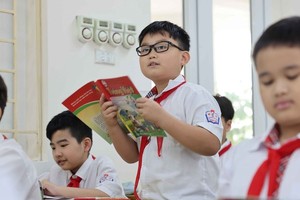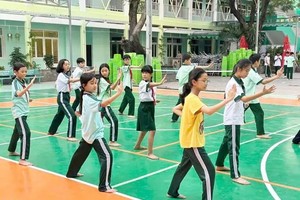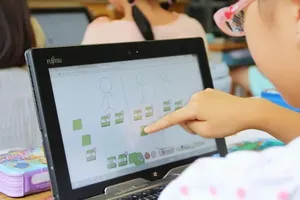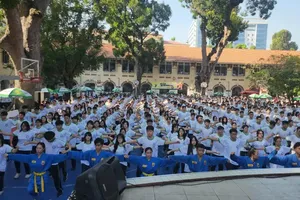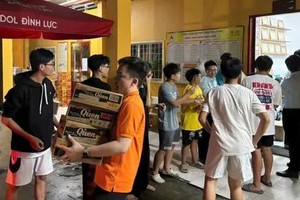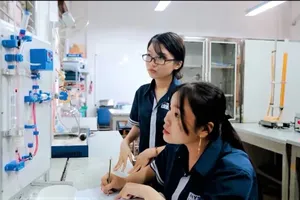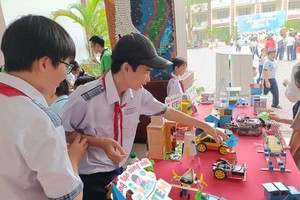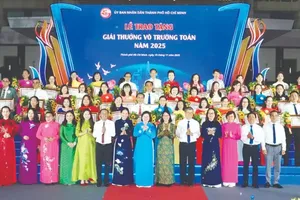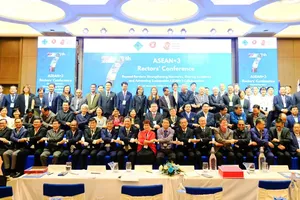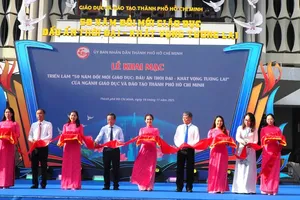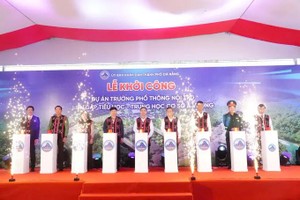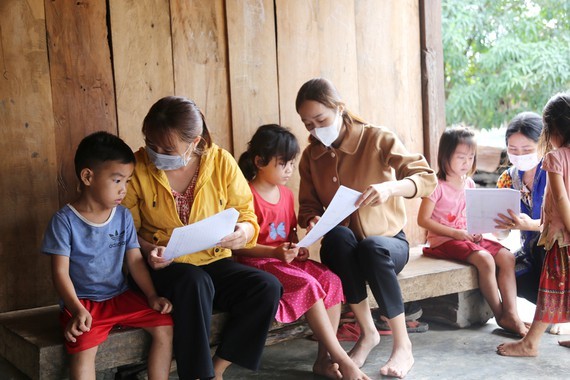 Teachers in the Central Highlands Province of Dak Lak come to students' houses to teach them (Photo: SGGP)
Teachers in the Central Highlands Province of Dak Lak come to students' houses to teach them (Photo: SGGP)
In its yesterday report on the situation at the beginning of the school year 2021-2022, the Ministry emphasized that all cities and provinces ought to continue to implement suitable solutions.
Moreover, local administrations and the education sector together develop plans and scenarios of virtual learning and teaching for a semester or even by month. Localities need to flexibly apply face-to-face learning, online learning on the internet, or through television depending on the development of the epidemic in their localities.
For disadvantaged areas and mountainous districts where students are unable to go to school, first and second graders will learn through television while third graders to twelfth graders will mainly learn on the internet in combination with learning on television.
As of September 20, 25 provinces and cities have conducted face-to-face learning meanwhile 14 provinces have combined face-to-face teaching and online and television teaching. However, 24 provinces and cities still have to teach virtually and via television to prevent the epidemic, including Hanoi and Ho Chi Minh City.
Schools in provinces and cities that have been implementing strict social distancing mandates have delivered textbooks to students through neighborhood groups and parent associations. Publishers have provided textbooks electronically. Video clips of some activities of nurturing, caring and educating preschoolers have been sent to parents via Zalo, Messenger, Viber, YouTube.
Regarding university enrollment in 2021, higher education institutions have implemented the enrollment plan for 2021 as per the schedule. Statistically, 165 students with 27 and 28 marks failed to make the cut because they have only applied for top police and military schools.

